How to Fertilize a Banana Plant: A Step-by-Step Guide for Healthy Growth
- February 20, 2024
- 1 comment
Discover the best ways to fertilize banana plants with our step-by-step guide for lush, healthy growth. Optimize your plant care today. Banana plants are a standout feature in many gardens, offering not just their delicious fruits but also adding a touch of the tropics with their large, verdant leaves. For gardeners aiming to maximize the health and yield of their banana plants, understanding the nuances of proper fertilization is essential. This guide is crafted to demystify the fertilization process, providing clear, step-by-step instructions to ensure your banana plants thrive.
Table of Contents
- Understanding Banana Plant Nutrition
- Assessing Your Soil
- Choosing the Right Fertilizer
- Planting and Spacing for Banana Orchards
- Step-by-Step Fertilization Guide
- Pruning Techniques for Healthy Growth
- Monitoring Plant Health
- Advanced Topics in Banana Plant Care
- Troubleshooting Tips for Common Problems
- Water Management for Optimal Growth
- Maximizing Fruit Production
- Conclusion
- FAQs
Understanding Banana Plant Nutrition
Key Nutrients and Their Functions
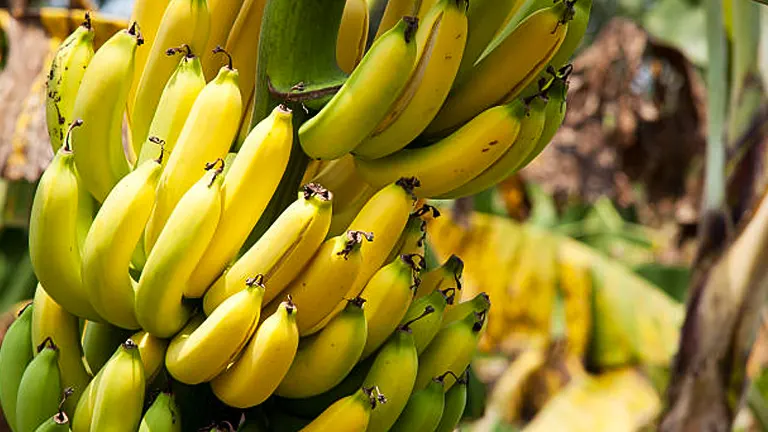
Banana plants require a complex array of nutrients, each playing a unique role in supporting various aspects of the plant’s growth and health. The balance of these nutrients is critical for achieving optimal growth, health, and fruit production.
- Nitrogen (N): Essential for the growth of leaves and overall vegetative expansion. It is a key component of chlorophyll, the molecule responsible for photosynthesis.
- Phosphorus (P): Vital for root development and the transfer of energy within the plant. It plays a significant role in the formation of flowers and the subsequent development of fruit.
- Potassium (K): Key to water regulation, enzyme activation, and photosynthesis. It significantly impacts fruit quality, improving the size, taste, and color of the banana.
Micronutrients, though needed in smaller amounts, are equally important:
- Magnesium (Mg): Crucial for photosynthesis and enzyme activation.
- Calcium (Ca): Important for cell wall structure and stability.
- Sulfur (S): Essential for protein synthesis and enzyme function.
Optimal Nutrient Levels and Their Impact
Understanding the optimal levels of these nutrients and their impact on the banana plant can help in precise fertilization, ensuring that plants receive exactly what they need for balanced growth and productivity.
Nutrient Analysis Table
| Nutrient | Function | Optimal Leaf Tissue Concentration |
|---|---|---|
| Nitrogen (N) | Supports leaf growth and photosynthesis. | 2.5-3.5% |
| Phosphorus (P) | Encourages root growth and energy transfer. | 0.2-0.4% |
| Potassium (K) | Crucial for water regulation and fruit quality. | 3.0-4.5% |
| Magnesium (Mg) | Key in photosynthesis and enzyme activation. | 0.3-0.5% |
| Calcium (Ca) | Essential for cell wall strength and growth regulation. | 0.5-1.5% |
| Sulfur (S) | Necessary for protein synthesis and enzyme activity. | 0.15-0.5% |
Insights for Nutrient Management
- Nutrient Mobility and Availability: Nutrients like nitrogen and potassium are highly mobile within the plant system, allowing them to be redirected to where they are most needed. Others, such as calcium, are immobile once deposited, making consistent supply crucial for new tissue growth.
- Soil pH Influence: The availability of these nutrients is heavily influenced by soil pH. A pH range of 5.5 to 6.5 is generally ideal for banana plants, ensuring optimal nutrient uptake.
- Advanced Fertilization Techniques: Foliar feeding can be an effective method for addressing immediate nutrient deficiencies, particularly for micronutrients like magnesium and zinc, which are quickly absorbed through the leaves.
Assessing Your Soil
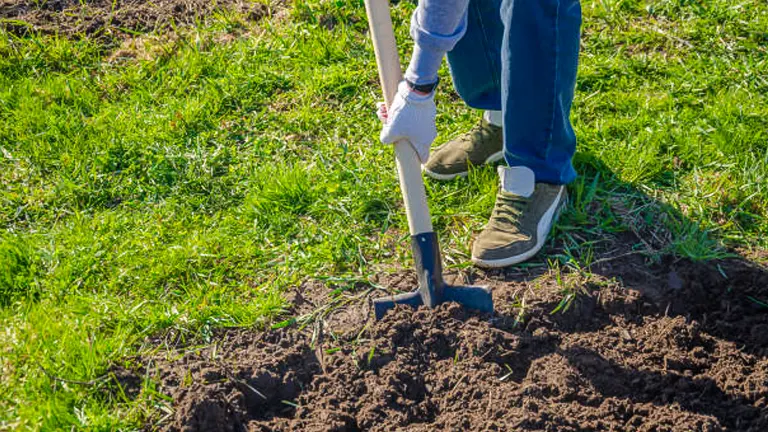
A preemptive soil assessment is your first step toward effective fertilization. This evaluation helps identify the existing nutrient makeup and pH level of your soil, offering insights into what your banana plant might need or have in excess. Use a soil testing kit to collect and analyze soil from around your plant. The outcome of this test will guide you in selecting the right fertilizer mix, ensuring your banana plant gets exactly what it needs for optimal growth.
Choosing the Right Fertilizer

The foundation of successful banana plant cultivation is understanding and meeting the plant’s unique nutritional needs. This begins with a careful assessment of your soil’s existing nutrient composition and adjusting your fertilization strategy accordingly.
- Organic Fertilizers: Products such as composted animal manure, seaweed extract, and bone meal offer a slow-release of nutrients, mimicking the natural nutrient uptake process of plants. They improve soil structure, increase water retention, and introduce beneficial microorganisms that help break down organic matter into usable nutrients. Organic fertilizers are not only beneficial for your banana plants but also contribute to the long-term health of your soil ecosystem.
- Chemical Fertilizers: While chemical fertilizers can provide a quick nutrient boost, they lack the ability to improve soil health over time. Their high solubility increases the risk of leaching, potentially contaminating water sources. However, when used judiciously and according to soil test recommendations, they can be an effective part of a comprehensive fertilization plan.
Tailoring Fertilization to Your Banana Plants
Choosing the right fertilizer for your banana plants involves considering both the specific needs of the plants and the characteristics of your soil. A balanced approach, often combining both organic and chemical sources, can provide the nutrients necessary for vigorous growth and fruitful harvests. For banana plants, a fertilizer blend with an NPK ratio favoring potassium, such as 8-10-13, is typically recommended. However, the final choice should be informed by a soil test to identify any specific nutrient deficiencies or excesses.
Planting and Spacing for Banana Orchards
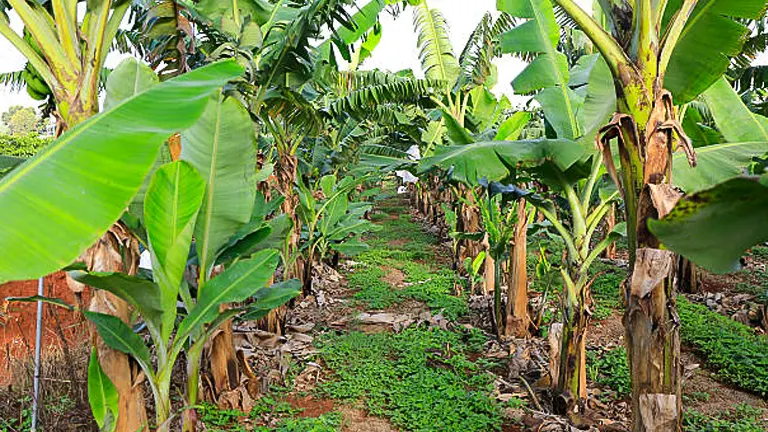
Proper planting and strategic spacing are pivotal for establishing a productive banana orchard. These practices influence not only the microclimate around each plant but also affect disease management, irrigation efficiency, and ease of harvest. Understanding the dynamics of plant spacing and its direct correlation with yield and plant health can significantly enhance orchard performance.
Optimal Planting Techniques
- Soil Preparation: Begin with thorough soil preparation, incorporating organic matter and ensuring proper drainage. This foundation supports robust root development.
- Planting Depth: Set banana suckers or tissue-cultured plants at the correct depth, generally around 30 cm, allowing enough room for root expansion without exposing the base to potential rot.
Strategic Spacing for Different Orchard Densities
Spacing strategies vary depending on the intended orchard density, which is influenced by the variety of banana, local climatic conditions, and management practices.
- Medium-Density Orchards: Ideal for balancing ease of management with high productivity. Spacing between plants and rows reduces competition and supports efficient nutrient use.
- High-Density Orchards: Aimed at maximizing yield per hectare, this approach requires intensive management to mitigate the risks of increased disease pressure and nutrient competition.
Spacing Guidelines Table
| Orchard Density | Plant-to-Plant Distance | Row-to-Row Distance | Expected Benefits |
|---|---|---|---|
| Medium Density | 2 to 2.5 meters | 3 to 4 meters | Balanced growth, easier management, optimal sunlight and air circulation. |
| High Density | 1.5 to 2 meters | 2 to 2.5 meters | Maximized yield, higher initial investment return, increased labor for management. |
Rationale Behind Spacing Decisions
- Light Distribution: Adequate spacing ensures sufficient sunlight reaches each plant, crucial for photosynthesis and overall plant energy.
- Air Circulation: Improved air flow around plants reduces humidity, lowering the risk of fungal diseases.
- Nutrient Access: Less competition for soil nutrients enhances individual plant growth and fruit quality.
- Irrigation Efficiency: Spacing affects irrigation design and water distribution, impacting water use efficiency and root health.
Advanced Insights
- Canopy Management: Proper spacing facilitates optimal canopy development, enhancing photosynthetic efficiency across the orchard.
- Root Competition: Understanding the root spread of banana plants can inform spacing decisions to minimize below-ground competition for water and nutrients.
Step-by-Step Fertilization Guide
Preparation
Fertilizing your banana plant at the right time is crucial. The optimal periods are at the beginning of the rainy season and periodically throughout the growing season, which encourages vigorous growth and fruiting. Before applying any fertilizer, clear the area around the base of the plant of weeds and debris to ensure the nutrients can reach the soil directly where they’re most needed.
To prepare:
- Weed and Debris Removal: Clear the vicinity around the plant’s base to minimize competition for nutrients and water. This step is essential for ensuring that the applied fertilizer benefits the banana plant directly.
- Soil Testing: Conducting a soil test prior to fertilization can offer invaluable insights into the soil’s nutrient profile, helping tailor the fertilization plan to meet the specific needs of your banana plant.
Application Methods
Fertilizer can be applied to banana plants in several ways, but the most common methods include:
- Broadcasting: This involves scattering granular fertilizer evenly around the plant’s base, reaching as far as the drip line. This method ensures a broad area of the root zone can access the nutrients after watering.
- Banding: By placing fertilizer in a concentrated band along one side of the plant row, this method aims to provide a targeted nutrient boost, particularly beneficial during the early growth stages.
- Foliar Sprays: Spraying diluted liquid fertilizer directly onto the leaves offers rapid absorption of nutrients. While beneficial for addressing immediate deficiencies, foliar feeding is supplementary and should not replace ground applications.
After applying fertilizer, it’s essential to water the area thoroughly. This helps dissolve the fertilizer and carry the nutrients into the soil where the plant’s roots can absorb them.
Dosage and Frequency
The nutritional needs of banana plants vary with age, size, and existing soil fertility:
- For Mature Plants: Apply 1 to 2 pounds of a balanced NPK fertilizer (e.g., 8-10-13) every 1 to 2 months during the active growth period. This guideline ensures sustained nutrient support for leaf, stem, and fruit development.
- For Young Plants: Begin with modest fertilizer amounts, incrementally increasing as the plant establishes and grows. This gradual approach prevents overwhelming young plants with excessive nutrients.
The key to successful fertilization lies in observation and adaptation. Monitor your banana plant’s growth and health response to adjust fertilization practices accordingly. Over-fertilization risks nutrient burn, manifesting as leaf scorch, while under-fertilization can stunt growth and fruit production.
By adopting these enhanced fertilization strategies, gardeners can ensure their banana plants receive the precise nutrient support needed at each growth stage. This meticulous approach to fertilization underscores the balance between providing sufficient nutrients for growth and avoiding the pitfalls of over-application, fostering a thriving environment for banana cultivation.
Pruning Techniques for Healthy Growth
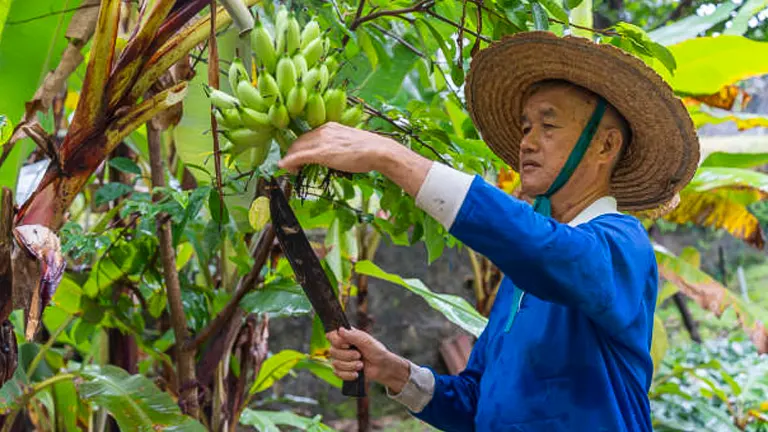
Pruning is a critical cultural practice in banana cultivation, directly influencing plant health, growth dynamics, and fruit yield. Effective pruning not only involves the removal of dead or damaged foliage but also encompasses strategic sucker management and timing considerations to ensure the vigor and productivity of the banana plant.
Strategic Removal of Leaves
- Objective: Enhance light penetration and air circulation within the canopy, reducing the incidence of fungal diseases.
- Method: Regularly inspect plants and remove leaves that are yellowing, damaged, or diseased. Ensure cuts are clean and made at the base of the leaf stem to prevent unnecessary wounds that could invite pathogens.
Post-Harvest Main Stem Pruning
- Physiological Basis: Each banana plant stem (pseudostem) produces fruit only once. Removing the spent stem encourages the distribution of resources to emerging suckers, which will carry the next generation of fruit.
- Practice: After harvest, cut the main stem close to ground level, using a sharp, sterilized tool to prevent infection. Apply a fungicide to the cut surface as a precautionary measure in regions prone to disease.
Sucker Management for Sustained Production
- Sucker Selection: Maintain one main fruiting stem at a time, alongside a ‘follower’ or ‘ratoon’ sucker, which will produce the next cycle’s fruit. Choose vigorous suckers with a broad base, as they are likely to develop into strong, productive plants.
- Timing and Technique: Remove additional suckers periodically to prevent overcrowding and competition for nutrients. The best time for sucker removal is during the dry season to reduce stress on the parent plant.
Understanding the Balance
- Energy Allocation: Pruning and sucker management help optimize the plant’s energy distribution. By focusing the plant’s resources on a limited number of stems, growers can achieve larger, healthier fruit clusters.
- Growth Cycle Synchronization: Strategic pruning can help synchronize the growth cycles of plants within a plantation, facilitating uniform care practices and harvesting.
Advanced Insights
- Impact on Microclimate: Proper pruning improves the microclimate around banana plants, reducing humidity levels that favor the development of fungal diseases.
- Nutrient Redistribution: Pruning stimulates the redistribution of nutrients within the plant, particularly beneficial after the fruiting phase when the plant prepares for the next growth cycle.
By applying these enhanced pruning techniques and understanding their underlying principles, banana plant cultivators can significantly improve plant health, vigor, and fruit quality. This comprehensive approach to pruning not only ensures the effective management of the banana plant’s growth and development but also lays the foundation for sustainable and productive cultivation practices.
Monitoring Plant Health
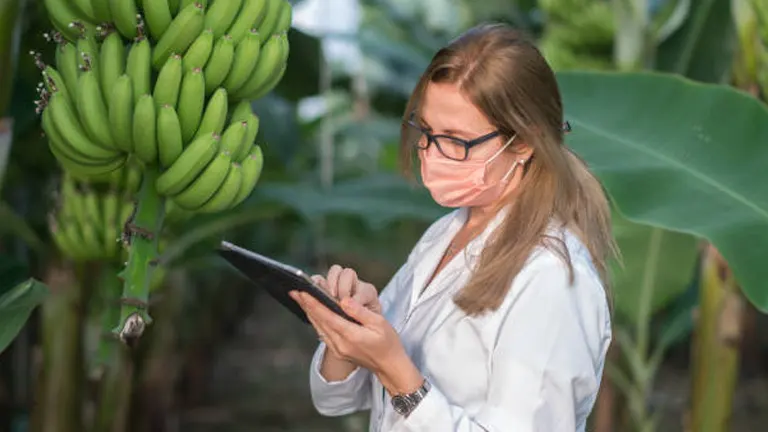
Keep an eye on your banana plant’s overall health and look for signs of nutrient deficiencies or excesses. Symptoms such as yellowing leaves may indicate a lack of essential nutrients, while dark, lush foliage with no fruit suggests an excess of nitrogen. Adjust your fertilization practices based on these observations to maintain a healthy balance.
By following these detailed steps for fertilizing and caring for your banana plant, you can ensure it thrives, providing lush foliage and abundant fruit. Remember, the key to successful plant care is observation and adjustment based on the plant’s needs.
Advanced Topics in Banana Plant Care
For those looking to deepen their knowledge and optimize their banana plant care regimen, consider exploring these advanced topics:
- Microclimate Management: Creating an ideal microclimate is pivotal for the health of banana plants, especially in non-tropical areas. Strategies include using natural windbreaks or artificial barriers to protect plants from harsh winds and employing shade cloth to moderate intense sunlight. Maintaining ambient humidity can also be achieved through regular watering and mulching, mimicking the banana plant’s natural rainforest habitat.
- Organic Mulching: Applying organic mulch around the base of banana plants offers numerous benefits. It helps retain soil moisture, reduces weed competition, and as it decomposes, enriches the soil with organic matter. Suitable mulching materials include straw, grass clippings, and shredded leaves. A thick layer of mulch also helps regulate soil temperature, keeping roots cool in summer and warm in winter.
- Companion Planting: Companion planting involves growing banana plants alongside other species that offer mutual benefits. Legumes can fix nitrogen from the air, enriching the soil for the high-feeding banana plants. Marigolds and other flowering plants attract beneficial insects that prey on common pests, reducing the need for chemical pest control.
- Soil Fertility Management: Sustaining soil fertility over time is critical for continuous banana production. Incorporating green manures, such as legume crops, adds nutrients back into the soil. Practicing crop rotation and planting cover crops can also prevent soil depletion, suppress weeds, and improve soil structure.
Troubleshooting Tips for Common Problems
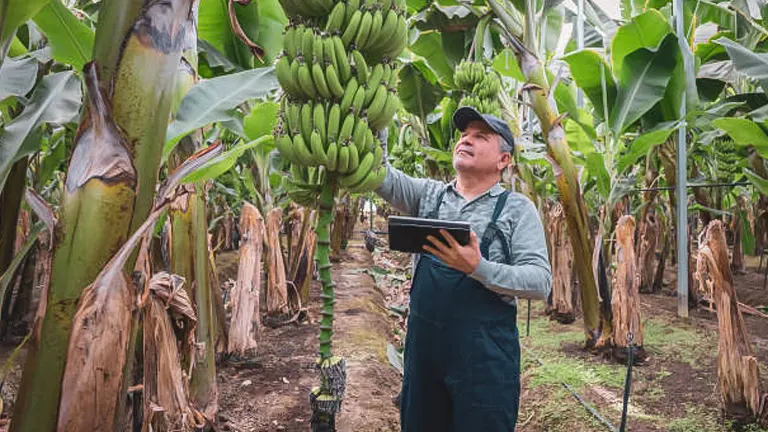
Despite best efforts, banana plants can sometimes encounter issues. Here are tips for addressing some common problems:
- Nutrient Deficiency Symptoms: Yellowing leaves often indicate a nitrogen deficiency, while a lack of potassium can cause weak stems and poor fruit development. Applying a balanced fertilizer or addressing specific deficiencies with targeted supplements can correct these issues.
- Dealing with Pests and Diseases: Banana plants are susceptible to pests like the banana weevil and diseases such as Black Sigatoka. Implementing an integrated pest management (IPM) approach, including regular monitoring, physical removal of pests, and the use of natural predators or organic pesticides, can effectively manage these challenges.
- Water Stress Management: Signs of water stress include wilting leaves or slow growth. Ensuring consistent, deep watering that reaches the roots without saturating the soil is key to avoiding water stress. In areas with heavy clay or poor drainage, raising beds or planting in mounds can improve water drainage.
- Fruit Production Issues: Poor fruit set or irregular fruit sizes may result from inadequate pollination, nutrient imbalances, or improper watering. Ensuring a healthy growing environment and addressing any care deficiencies can help stabilize fruit production.
By following this guide and addressing issues proactively, you can enjoy the rewards of cultivating healthy, productive banana plants. The key is consistent care, regular monitoring, and a willingness to adjust your practices based on the plant’s needs and environmental conditions.
Water Management for Optimal Growth
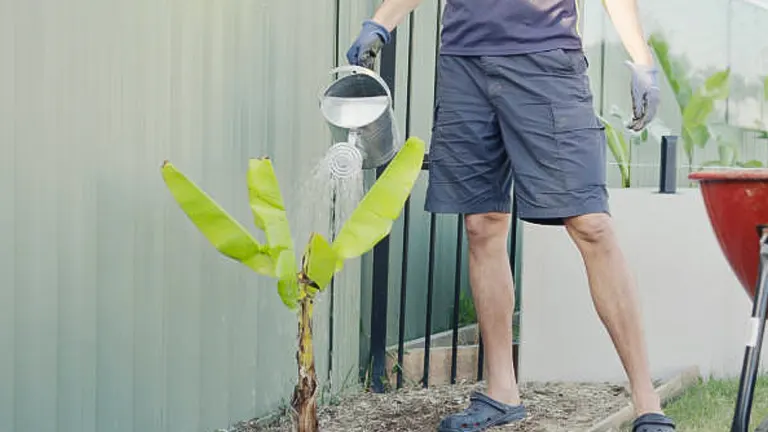
Efficient water management is crucial for the health and productivity of banana plants. These tropical perennials demand a delicate balance of moisture—enough to satisfy their high water needs without causing waterlogging. Understanding the plant’s water requirements throughout its lifecycle, coupled with modern irrigation techniques, can significantly improve growth outcomes.
Understanding Banana Plant Water Needs
Banana plants have distinct water requirements at different stages of growth, influenced by environmental factors and the plant’s physiological state.
- Seedling Stage: Young plants are particularly vulnerable to drought stress, requiring consistent soil moisture to establish a robust root system.
- Vegetative Growth: During this phase, plants need ample water to support rapid leaf development and stem growth.
- Flowering and Fruiting: Water demand peaks as plants flower and produce fruit, critical for achieving optimal fruit size and quality.
Advanced Irrigation Techniques
Implementing precise irrigation strategies not only ensures that banana plants receive adequate water but also conserves resources and prevents disease.
- Drip Irrigation: Delivers water directly to the plant’s root zone, reducing evaporation losses and minimizing leaf wetness that can lead to fungal diseases.
- Mulching: Applying organic mulches conserves soil moisture, reduces temperature fluctuations, and maintains consistent soil hydration.
- Irrigation Scheduling: Tailoring irrigation schedules based on soil moisture levels, weather forecasts, and plant growth stages optimizes water use efficiency.
Water Management Strategies Table for Banana Plant Growth
| Growth Stage | Water Requirement | Recommended Irrigation Strategy | Expected Benefits |
|---|---|---|---|
| Initial Establishment | High | Daily light watering for young plants; ensure even soil moisture without waterlogging. | Promotes strong root development and plant establishment. |
| Vegetative Growth | Moderate to High | Adjust to deeper, less frequent watering as plants mature to encourage root depth. | Supports rapid leaf growth and strong pseudostem development. |
| Flowering | High | Increase irrigation frequency and volume as flower and fruit begin to develop. | Ensures optimal flower health and fruit set. |
| Fruiting and Maturation | Very High | Maintain increased water supply until fruit begins to mature. | Maximizes fruit size, quality, and overall yield. |
| Post-Harvest | Moderate | Reduce watering post-harvest to match the plant’s reduced water needs. | Helps in resource conservation and prepares the plant for the next cycle. |
By focusing on the specific water needs of banana plants at each stage of their growth and employing strategic irrigation practices, growers can optimize water use, enhance plant health, and achieve higher productivity. This tailored approach to water management underscores the importance of understanding the physiological needs of banana plants and responding with precision to ensure their vigorous growth and fruitful harvest.
Maximizing Fruit Production
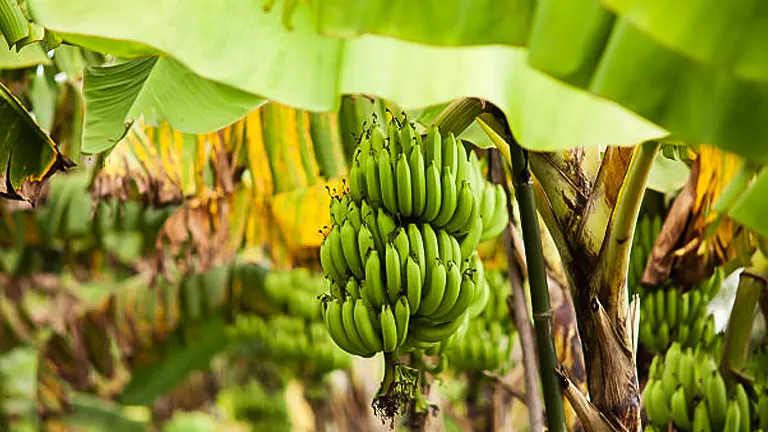
Maximizing the fruit production of banana plants requires a nuanced understanding of their biology and the application of precise cultivation techniques. Beyond basic care, optimizing fruit yield involves strategic nutrient management, rigorous sucker control, and understanding the physiological demands of the plant during its growth cycle.
Nutrient Management for Optimal Fruit Development
Banana plants are heavy feeders, requiring a balanced supply of macronutrients and micronutrients to support their rapid growth and fruit production. Potassium (K) is particularly crucial during the flowering and fruiting stages, as it plays a key role in water regulation, enzyme activation, and photosynthesis. Phosphorus (P) supports root development and the transfer of energy throughout the plant, essential for the development of healthy fruits. Nitrogen (N), while essential for leaf growth, should be managed carefully to avoid excessive vegetative growth at the expense of fruit production.
Advanced Sucker Management
Sucker management is critical for directing the plant’s energy towards producing a robust main stem and healthy fruits. The practice involves selectively retaining a limited number of suckers, ideally 2-3 per plant, which ensures that the main stem receives the majority of nutrients and water. This selective process, known as ‘culling’, encourages the development of one strong follower sucker, known as the “ratoon,” to continue the production cycle after the main stem has fruited.
Scientific Analysis and Recommendations
| Nutrient | Role in Fruit Development | Recommended Concentration |
|---|---|---|
| Potassium (K) | Enhances sugar transport and starch conversion, crucial for fruit quality and size. | 450-500 ppm in leaf tissue |
| Phosphorus (P) | Supports energy transfer and flowering, critical for fruit set. | 30-50 ppm in leaf tissue |
| Nitrogen (N) | Necessary for leaf growth, but balance is crucial to avoid compromising fruit production. | 250-300 ppm in leaf tissue |
Insights for Maximizing Yield
- Microclimate Optimization: Creating a favorable microclimate can significantly enhance fruit yield. This includes protecting plants from wind, optimizing sunlight exposure, and maintaining high humidity levels around the canopy.
- Irrigation Strategy: Employing drip irrigation can improve water use efficiency, ensuring that water and soluble fertilizers are delivered directly to the root zone where they are most needed.
- Flowering Regulation: Exposing plants to ethylene or manipulating light exposure can trigger uniform flowering, leading to synchronous fruit development and harvest.
Conclusion
In conclusion, achieving healthy and productive banana plants requires a comprehensive approach that includes proper nutrition, water and soil management, and sustainable practices. By focusing on organic and eco-friendly methods, gardeners can cultivate thriving plants and contribute positively to the ecosystem. This guide highlights the importance of combining scientific knowledge with patience and respect for nature to enjoy a bountiful banana garden.
FAQs
- What is the best type of fertilizer for banana plants?
Banana plants benefit from a balanced fertilizer high in potassium (K), nitrogen (N), and phosphorus (P). A typical NPK ratio recommended is 8-10-13, but this may vary based on soil test results. Organic options like composted manure or specially formulated organic banana fertilizers are also excellent choices for sustainable growth. - How often should I fertilize my banana plant?
Fertilize mature banana plants every 1-2 months during the growing season. Younger plants, or those recently planted, should be fertilized lightly and more frequently until they are established. Adjust the frequency based on the plant’s response and the specific product instructions. - Can over-fertilizing harm my banana plant?
Yes, over-fertilizing can lead to nutrient burn, characterized by brown leaf edges and tips, and may also disturb the soil’s nutrient balance, making it harder for the plant to absorb water and nutrients effectively. Always follow recommended rates and observe your plant for signs of distress. - When is the best time to start fertilizing a newly planted banana plant?
Begin fertilizing a newly planted banana plant about 4-6 weeks after planting, once it has shown signs of new growth and appears to be successfully established. Start with a reduced fertilizer application to avoid overwhelming the young plant. - Should I alter my fertilization routine during the flowering or fruiting stages?
Yes, during flowering and fruiting, banana plants have increased nutritional needs, particularly for potassium, which supports fruit development. Slightly increase the application of a potassium-rich fertilizer to support these stages. - How does soil pH affect fertilization for banana plants?
Soil pH affects nutrient availability; banana plants prefer a slightly acidic to neutral pH (5.5-7.0). If the soil pH is outside this range, nutrients may become less available, making fertilization less effective. Test your soil pH and adjust accordingly before applying fertilizer. - Can I use liquid fertilizers for my banana plants?
Liquid fertilizers are effective and can be quickly absorbed by the plant. They are particularly useful for foliar feeding or providing quick nutrient boosts. However, they should complement, not replace, solid granular or slow-release fertilizers that provide a steady nutrient supply. - What role do micronutrients play in banana plant fertilization?
Micronutrients, such as magnesium, calcium, and zinc, play vital roles in plant health, including chlorophyll production, enzyme activation, and disease resistance. Although needed in smaller amounts than macronutrients, ensuring your banana plant receives a balanced micronutrient supply is crucial for overall health and productivity. Use a micronutrient blend or foliar spray as needed, based on soil test recommendations.
In closiing, proper fertilization is key to unlocking the lush growth and bountiful harvest of your banana plants. By choosing the right fertilizer, adhering to a regular feeding schedule, and adjusting your approach based on the plant’s life cycle, you’ll ensure your banana plants receive the nutrients they need to thrive. Remember, a little attention and care go a long way in the world of gardening. Happy fertilizing!

Benjamin Brooks
Forestry AuthorGreetings! I'm Benjamin Brooks, and my journey over the past 15 years has revolved around the fascinating realms of content creation, expertise in snow clearing, and the intricate world of lumberjacking and landscaping. What began as a simple curiosity about the natural world and heavy machinery has evolved into a passionate profession where my love for crafting words intertwines seamlessly with my lumberjacking and garden skills.



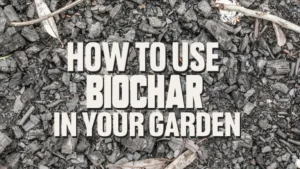









I thank you very much for the elaborate explanation about banana growing. I have 08 banana plants only around my house because of limited space but I will follow what you have taught me to see that I get the best results. I will send you the pictures of my banana plants currently for you to recommend. I thank you once again.
Christopher Kakande
June 29, 2024 4:19 pm